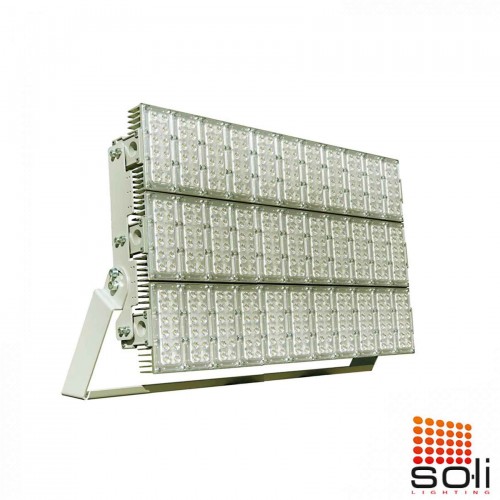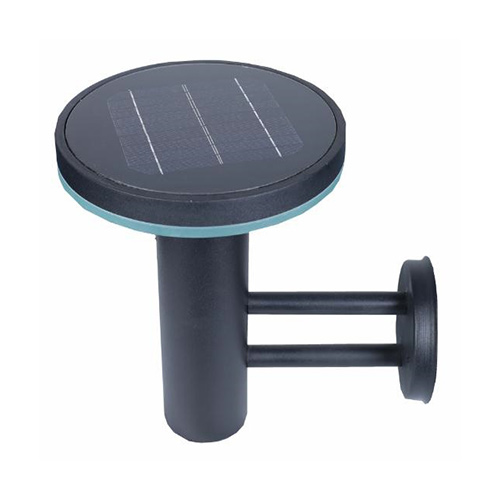Performance of LED Lights in Cold Weather
The performance of LED lighting is affected by heat. It can be said that LEDs have a wide suitable temperature range between -30 °C and 60 °C and the optimum temperature for LED lighting is 25 °C. High ambient temperature will reduce the effectiveness of LED lighting performance and result in lower power conversion from electricity to light. If high ambient temperature weakens the performance of LEDs, let's take a look at what happens at low temperatures;
There are two main issues regarding the performance of LED lighting in cold weather. It is the capacity for smooth starting and stable operation. Rain and snow are possible in cold weather, but ice and frost may also occur. To understand whether LED lights perform well in cold weather, we need to know how LEDs work and the relationship between temperature and LED light performance.
How does LED work?
LED (Light Emitting Diode) is a semiconductor device that emits light by current flow. A die is the active area of the LED. A plastic or ceramic body covers one or more of the molds. When the LED is forward facing, the electrons can recombine inside the electron holes, releasing energy in the form of photons. This effect is called electroluminescence. The core of the LED is a sheet consisting of a P-type semiconductor and an N-type semiconductor, with a transition layer called PN junction between them. Minority carriers injected with majority carriers in the PN junction of some semiconductor materials will release excess energy in the form of light. Therefore, LED can directly convert electrical energy into light energy. The color of the light is related to the energy required for the emitted electrons. The more energy released, the shorter the wavelength of the emitted light.
Electroluminescence; It is an optical and electrical phenomenon and is the state of emitting light in response to an electric current or a very strong electric field passing through the material.
How Does Cold Weather Affect the Performance of LEDs?
The capacity to start lighting in cold weather is important for some areas. LED is a semiconductor, so free electrons in a negatively charged component are transferred to holes in positively charged components with the help of electrical energy. Light is emitted when forward activity occurs. LEDs are heated by the current flowing through them. Since the LEDs respond in the electronic driver instead of warming up, the LEDs can be activated in cold weather. In addition, electronic drives can be used from -30 °C. That's why LED lights can perform well in cold weather.
Unlike traditional lighting methods, LED lights generate less heat. The port temperature and ambient temperature are therefore lower than conventional lights. Supports lower junction and ambient temperature current conduction. For this reason, the driver is not affected much and the lumen output is in a good state. As a result, we can say that cold weather conditions will not affect the performance of LED lights.
IMPORTANT NOTE: It should be known that the lighting performance in cold weather can be affected by the materials, sealing and electrical equipment of the LED luminaires as well as the LEDs.
Our ..
₺52,250
Ex Tax:₺52,250
The excite..
₺69,800
Ex Tax:₺69,800
&nbs..
₺42,250
Ex Tax:₺42,250
The excite..
₺24,350
Ex Tax:₺24,350
Our Soli L..
₺18,400
Ex Tax:₺18,400
&nbs..
₺6,450
Ex Tax:₺6,450
Our ..
₺8,700
Ex Tax:₺8,700
The excite..
₺26,600
Ex Tax:₺26,600
LED ..
₺5,250
Ex Tax:₺5,250
Road..
₺6,600
Ex Tax:₺6,600
LED Luminaire Materials
It is a nasty threat to LED lighting performance if the material of LED fixtures is affected by low temperature and water. That's why the materials of LED fixtures are critical for performance. The components of LED luminaires must be made of high quality material. Metal, aluminum, carbon steels and plastic are widely used as the main material of LED luminaires. They may become more brittle and rot due to low temperature. Enclosure should be used to protect materials from the influence of low temperature. Waterproofing and corrosion resistance are also important for the materials of LED luminaires.
Sealing of LED Luminaires
Sealing must also be considered for lighting performance in cold weather. Gaskets should not be spilled and should be adjusted to a temperature above 0 °C. It is important to seal in cold weather where the temperature is below 0 °C. Low temperature can cause the LED luminaire components to fail, causing their internal components to fail. It is difficult to obtain proper seal installations in the field due to the low temperature. Parts of LED luminaires should be sealed in factories to avoid problems. This reduces the need for sealing in cold temperature conditions. Factory sealed fixtures increase the safety of electrical parts and facilitate assembly.
Electrical Equipment of LED Luminaires
Wire and cable are the equipment that transfers the flow of electricity to the LEDs. Snow and ice can cover LED fixtures in cold weather, causing serious problems in lighting performance. Apart from snow and ice, LED luminaires also face the risk of rain. The factors mentioned earlier have a significant impact on wire and cable. It is recommended to keep the cables at a temperature above 10 °C before installation. The intense stress and low temperature of snow, ice, and rain can damage the insulation on wire and cable, preventing electrical conduction. Laying cables should be done slowly and very carefully.
LED Lights can perform well in cold weather. LEDs work normally in cold weather because they need electricity, not heat, to burn. In addition, the lumen output of the LEDs is not affected by cold weather. LEDs generate less heat than conventional lighting. The cold air releases stress on the driver and subsequently improves lumen output overall. But the luminous performance of LED lights is not only related to LEDs, but also to the material, sealing and electrical equipment of LED luminaires. Cold weather greatly affects their performance. Materials can be more brittle in cold weather and sealing is difficult in cold weather. Electrical equipment such as wire and cable are more likely to be damaged by cold weather. As a result, since we know these features and what needs to be done, we recommend that you make your choice by taking these aspects into account in your luminaire selection.
About LED Flood Lights
- LED Flood Light Buying Guide
- Brain Of Led Flood Lights : LED Flood Light Drivers
- Can A Floodlight Be Used Instead Of Street Lights?
- Are LED Lights Suitable for Hazardous Locations?
- About High Bay and Low Bay Lighting
- 10 Benefits of LED Floodlights for Outdoor Lighting
- Main Factors of Outdoor LED Lighting Design
- Solar Floodlight
- Smart and Human Centered Lighting
- 4 Lighting Design For Post-Covid
- Health Risks That Are Actually Myth About LED Lights
- Things to Avoid When Upgrading Your Lighting Style to LED
- The Future of LED Lighting
- High Power LED Floodlight
- About Amount of Light And Light Quality
- LED Stadium Lighting Information
- Performance of LED Lights in Cold Weather
Usage Areas
- Sports Lighting
- How To Choose Stadium Lighting Company
- Aircraft Hangar Tips
- LED Warehouse Lighting
- Automotive Showroom Lighting
- Safety and Operational Tips for Light Towers
- Advantages and Applications of LED Street Lights
- How LED Street Lights Can Save Citizens Millions of Liras
- Outdoor LED Lighting
- Is LED Industry Evolving?
- LED For Car Parks
- Solar Street Lights
- Use of LEDs in Tunnel Lighting
- LED Lights for Your Garden Inside Your Home
- Solar Street Lights Calculation and Sizing




















